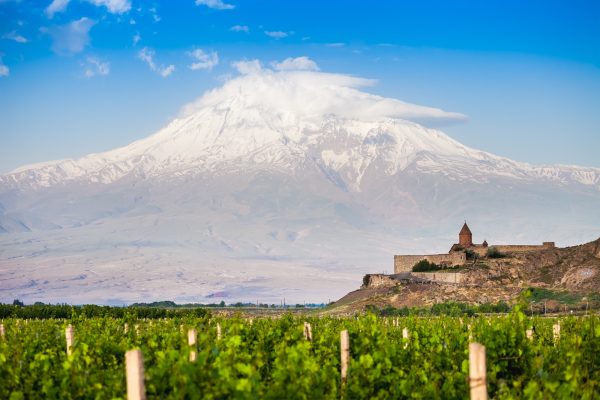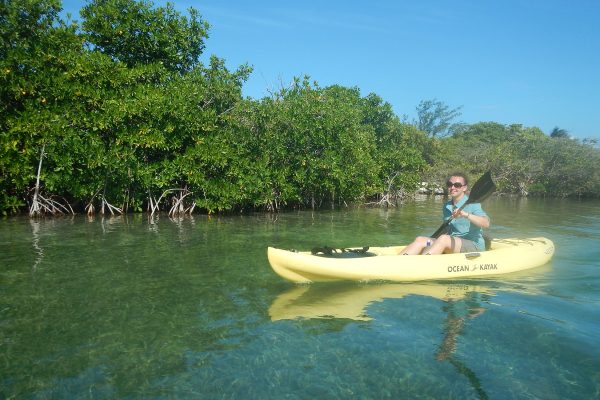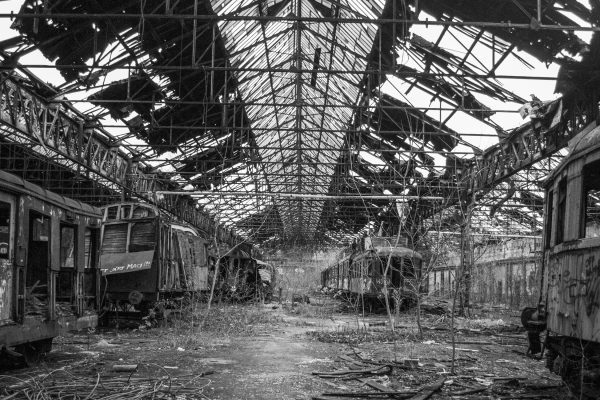Trip duration: 3 weeks | Approx cost: £1,000 | When: December
Doinit factor: Drive the Paris Dakar on your own terms, now that’s pretty epic
For years, taking part in something like the Paris – Dakar Rally was for the uber rich and well-funded, unfairly out of reach for the average person; but then came along the Plymouth Banjul Rally and changed everything. Bangers destined for the scrap yard are now given one last adventure. Paired up with new owners, man and machine bond over the 4000 mile road trip from the UK to the small West African nation of The Gambia.
For many adventurers, this is as close to the Paris – Dakar Rally as they will get, especially if done as part of an organised rally. Despite initially being apprehensive about paying an ‘entry fee’, it is definitely worth the price as not only safety in numbers is paramount, but wealth of information in the form of a road book complied by past participants issued to all entrants proofs invaluable. As part of the package you should expect a couple of guide books, maps, car stickers and perhaps some accommodation en route, oh and a pretty fun launch party. Nowadays an online presence were you can keep your friends and family up today is also include. All in all, it’s a pretty decent entry pack. You should remember that despite this being an organised rally, it is not a race and there is no assistance if things turn ugly.
Route
Apart from the starting point, much of the route is broadly fixed due to the available infrastructure. Travelling through Europe can be pretty expensive so be sure to plan a route that avoids the major motorways which commonly bare a toll. Taking London as a starting point, broadly speaking, your route should take your through Central France, down the coast of Spain until you reach Tarifa or Algracias. Once you’ve decided on how you’re crossing the Straight of Gibraltar, make your way to Marrakesh, either via Rabat or Fes and continue onto Layounne; staying on the one and only road all the way to Dahkla, Noudibou, Nouachott, Dakar and arriving in Banjul.
The European leg tends to be a bit rushed, with good roads, bad weather, and a sense of familiarity, there’s little reason to hang around. Sure there’s interesting sights along the way but this road trip is all about taking an inherently inappropriate car across the West African Sahara. Of course some sights can be taken in from the comfort (or discomfort) of your ride; Paris, Madrid, the Pyrenees and the Millau Viaduct (the world’s tallest bridge) naming just a few. The feat of Europe can be tackled in as little as 24 hours non-stop driving if changing drivers, but realistically allow a long two day drive to reach the Southern Spanish towns of Tarifa or Algercias – both a embarkation points for the sunny shores of Africa. Close by and certainly worth adding to your itinerary is the British Overseas Territory of Gibraltar affectionately referred to as the ‘the rock’.
Gibraltar is an interesting place, a little slice of home on a rocky outcrop of the Spanish mainland. It offers visitors a unique and quirky experience of walking across a live airport runway with the securities of safety in mind and legal technicalities. When planes land, barriers drop and pedestrians, along with traffic, must come to a holt until the plane passes. It only takes a few minutes and you’ll notice the subtle difference between mainland Europe and the UK. The road markings, sign posts, traffic lights, post boxes, and zebra crossings all seemingly very familiar. ‘Winston Churchill Avenue’, the one and only road that heads into the overseas territory, eventually leads you to what can only be described as a typical British high-street. Here you can feel right at home, doing last minute shopping in Morrison’s and strolling through the last area of your comfort zone. Hear is your final chance to grab any creature confronts from ‘home’. As there is only the one road that enters Gibraltar, the traffic has a tendency to back up significantly. It worth parking up in Spain and crossing the border on foot – passport or British driving license is required.
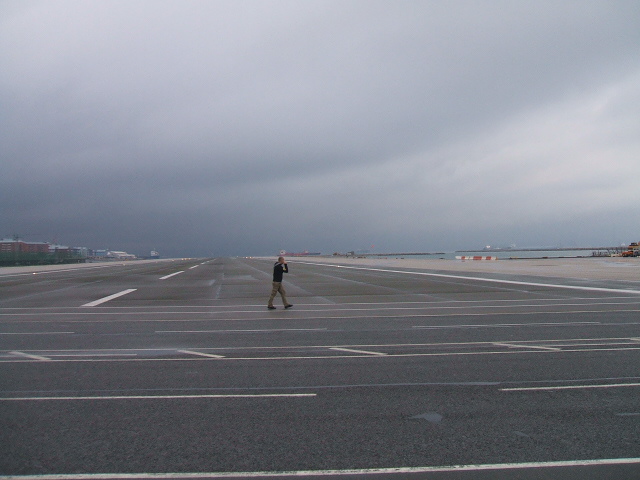
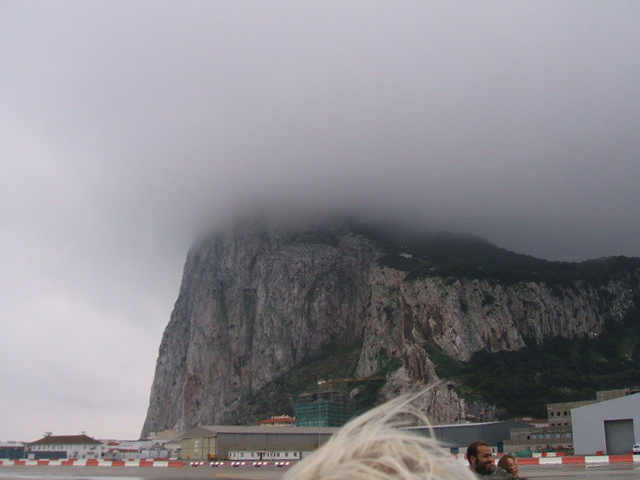
Above: Crossing the runway in Gibraltar | The weather deters as from visiting the ‘Rock’
Once you’ve stocked up and mentally prepared yourself of things to come, crossing the ‘Strait of Gibraltar’ is straight forward. More companies cross this stretch of water than the English Channel but prices won’t be as cheap as you may expect. Crossings operate from the ports; Tarifa and Algercias and go to the Moroccan port of ‘Tanger’, or the Spanish enclave of ‘Ceuta’ (much like what Gibraltar is to Britain).
Eventually you’ll have to deal with Moroccan border control; your first experience of what crossing all African borders is going to be like. The Moroccan border guards take pride in their bureaucracy so it’s best to have all your paperwork in good order, though to be honest, even if it is perfect it doesn’t speed up the process dramatically. Foreign cars have been known to be here anywhere between 1 to 5 hours trying to enter Morocco. This is the first real glimpse of Africa and at first can seem quite daunting to some; thoughts of ‘…what did we get into’ spring to mind, but if you stick with it, soon you’ll be laughing the experience off with your team mates.
If travelling in a convoy of cars it can be easier to nominate one individual to present all the papers to the customs/police on behalf of you all. Smile, be polite and you’ll soon be on your way, that is unless you offend them somehow. Flags or route maps depicting Western Sahara as an independent state are a touchy subject. Border officials are known to make you cross the words out in your books, and on your car should you think it was a good idea to stick your itinerary on there! Unless you’ve organised this before you’ve left the UK, your first priority once in Morocco should be to obtain car insurance. The reality is that if you do have an accident, chances are the insurance will be of no use to you, however, you will pass dozens of check points throughout the country where you will be asked for it. It’s not expensive and it’s not worth the hassle should you be caught without any. Think of it as your first adventure, few hours into a foreign land, and finding an office somewhere in town may prove challenging. Despite the guide books and maps suggesting otherwise, local people aren’t too aware of streets names and you definitely won’t find them on street corners. Instead monuments and places of interest should be your reference point. Ask the people directly for where you need to go; they are friendly and egger to help.
Aforementioned, there is no set route and teams tend to part their way for a day or two at this point- meeting up at a designated campsite later in the journey. The main options available are the coastal but tolled motorway straight to Rabat, following onto Casablanca and to Marrakesh or the more scenic route though the Rift Mountains, onto Fes/Meknes. The latter of which will definitely be a contrast to the Africa you may be expecting. Small roads traverse these lush green mountains and snow-capped peaks are reflected of the beaming sun. The road narrow roads climb and dip, running through small villages in the process and imprinting themselves into the picturesque landscape. One of the more popular stops along the route is the stunning mountain town of ‘Chefchaouen’.
Whether it’s just for lunch or for the night, you’ll fall in love with the towns white and blue façade, spread along the hilly landscape and with its narrow (and very steep) alleyways. Providing you don’t stop earlier, consider this your first cultural experience in Morocco! No matter which routes you take you’ll become familiar with the constant offering of ‘hashish’ (of Kif) and be met with some unique and challenging experiences. Consider which route you take carefully as the chances are, you will still need to get your Visa for Mauritania in Rabat.
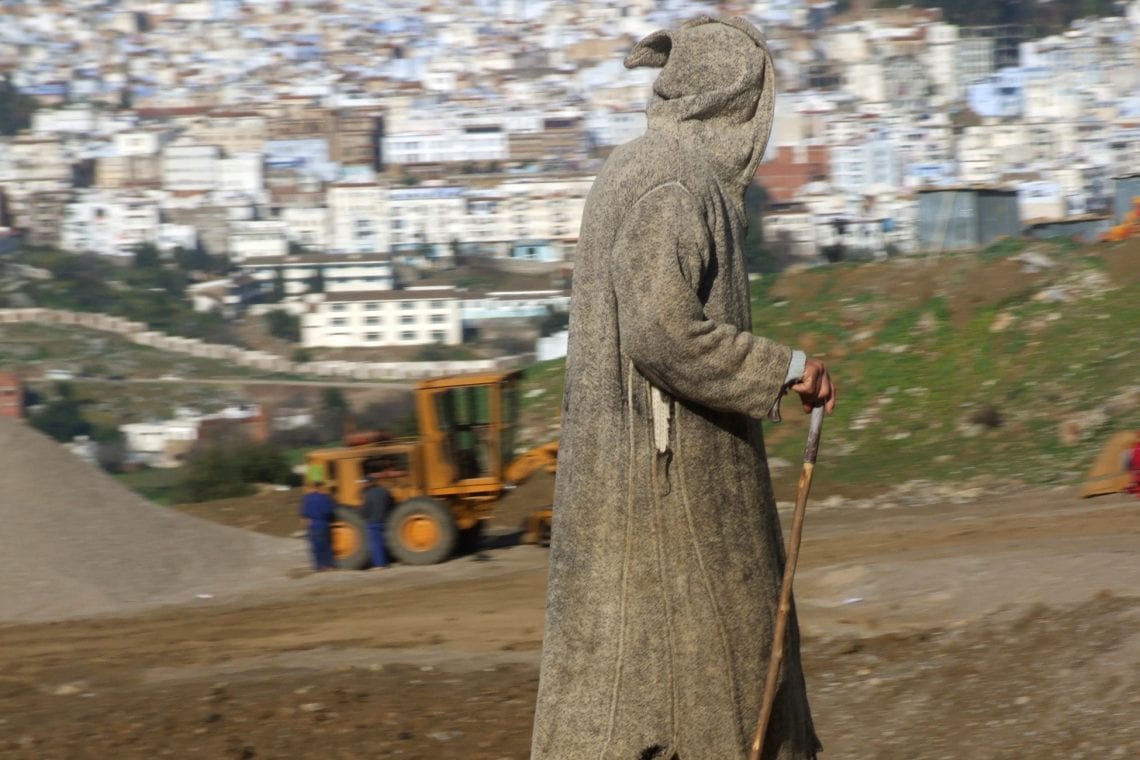
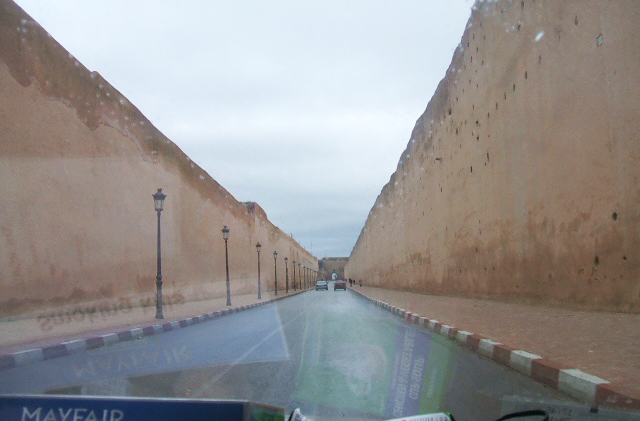
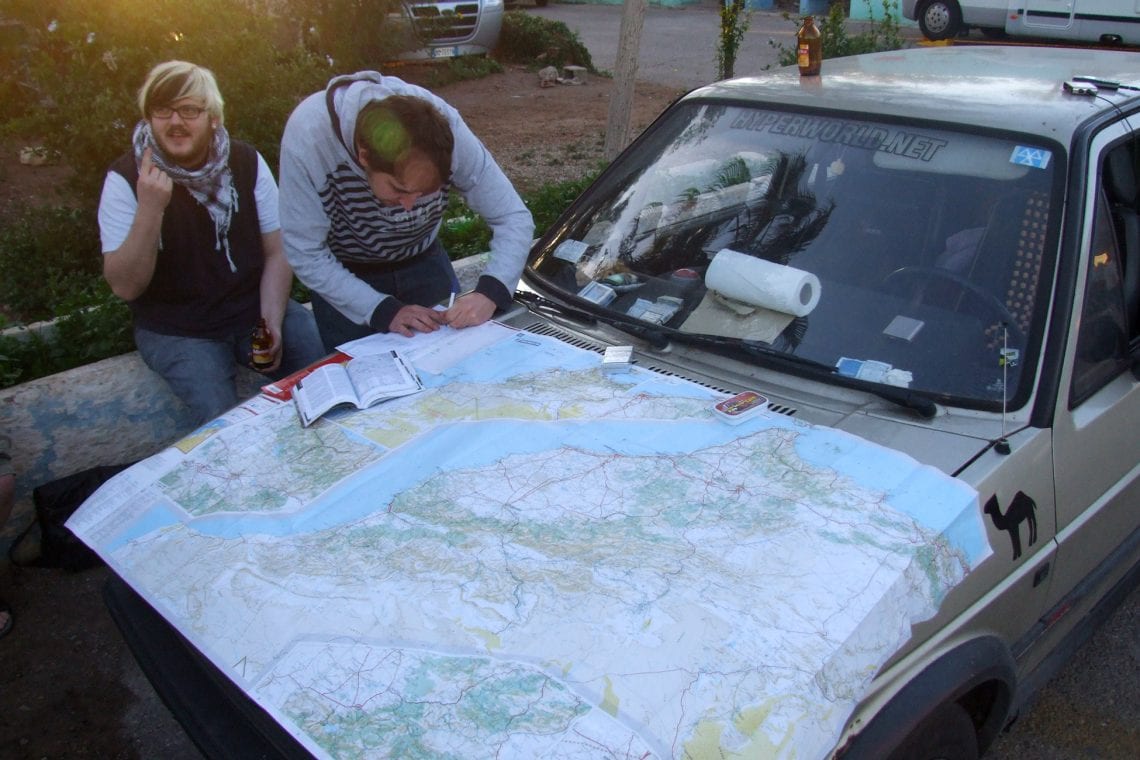
Above: Our dive through the Rift mountains thought Cheffhaouen to the walled city of Meknes where we plan our next days
Post Chefchaouen, some 200km further south, Fes and Meknes will come to your attention. They are the next ‘big thing’ to hit you whilst you’re on your way to Marrakesh. Strictly speaking, they are both accessible which ever route you take however you will save yourself time if you’re already on the route through the Rift Mountains. Fes, once the former capital, hosts the world’s largest contiguous car-free urban area and its medina is named as an UNESCO World Heritage site. Funnily enough, Meknes to was also once the capital but still remains the regional capital.
Should you travel down the coast of Morocco, you’ll encounter the cosmopolitan capital of Rabat; once again a stark contrast to the Africa you’re expecting. The chances are that unless you have sorted this beforehand, you will need to apply for your Mauritanian Visa here. The embassy is relatively far from the city centre, however there is nothing stopping you from parking up right in front of the embassy and taking a 30 minute stroll into town. The Visa takes 24 hours so you may find yourself camping in your car for the night. Rabat does offer some accommodation, but with its one way systems, they prove tricky to find! One thing to definitely look out for is the development of a tram network, supporting the urbanisation of Morocco. Rabat also offers some great shopping opportunities in the medina. Shop keepers remain very polite and unlike in other cities you will encounter, will not push you into buying/negotiating.
A must stop is the scenic and anything but quaint city of Marrakesh. Marrakesh is an amazing city and a whistle-stop tour really won’t give it justice. With regular low-cost airlines operating here, if you do fall in love here you can always visit later on in the year, and perhaps when it’s warmer. First timers here will be surprised to learn that it can get quite chilly here in the winter. Buying a traditional ‘Berber Jubbla’ may prove to be a worthy purchase as it will not only keep you warm, but also makes a unique and quirky souvenir. These can be picked up from almost anywhere in the medina amongst the thousands of stall owners that barter for your attention. If you are here for a day or two, much of the time you spend will be in the ‘hussle and bussle’ of the city centre. Here your senses can really be stimulated to new heights; the sounds, the sights, and the smells can leave you bewildered. Market traders, stories tellers, monkey handles, snake charmers all scatter throughout the medina, all bidding for your cash. The central part is occupied by eateries which offer some of the finest street vending you’ll come across. Moroccans delicacies, kebabs and for the more adventures, goats head are all available. This is a great place to just sit, watch and sip some traditional tea. The smoke from the many grills that bellow out smoke into the air will leave your mouth salivating and burning with anticipation. Even once you leave, your eyes and sinuses will still remain stimulated by the pyramids of colourful spices that fill the alleys. Most likely, the street venders won’t fulfil what you need to supply, so consider stocking up in the local ‘Marjam’ supermarkets before its time to hit the road again.
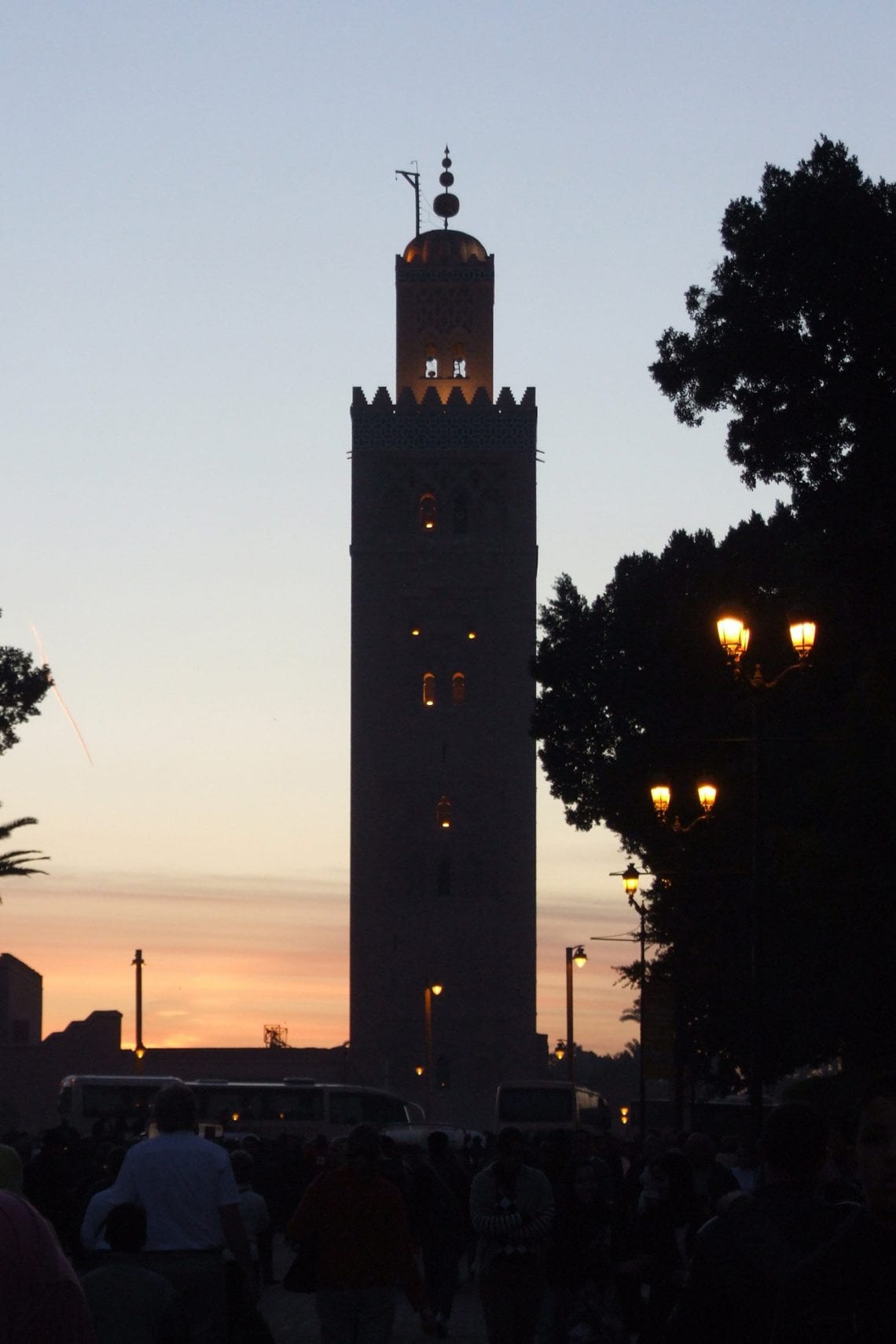
Above: Kutubiyya Mosque and the Jemaa el-Fnaa square with plenty of food stalls
You’ll be sorry to leave Marrakesh, but your still in early days of the Plymouth Banjul rally and many miles yet to cover. A good motorway will take you to the Southern city of Agadir, a major tourist destination for Europeans in search of the winter sun. Agadir seems like a resort town and is probably has the least Moroccan vibe of cities en route. A large campsite with a majority of French mobile homes provides a good camping ground, though if full you may have to pitch a tent on the road. During our rally, an older French lady asked us “…where you going?”, and in our best broken French we replied with “…nous allons à la Mauritanie”. Confidence faded when her reply suggested danger lay ahead; – “ahhh nou Mauritania… BOOM BOOM”.
With Agadir behind you, the road heads further south along the single lane road, hugging the African coastline and through the ever changing Saharan landscape. The shades of green from the previous day turn brown, and vegetation becomes scarce – sun dunes twinkle in horizon. The landscape despite fascinating at first glance, becomes rather repetitive and after hours of the same scenery, you should be glad to be entering the province of Western Sahara. Not that there is anymore more than baron, sun scorched sand here, but it marks a milestone in the rally. Depending on the map you have, it may, or may not depict Western Sahara as a separate country. Morocco however unanimously claims the territory as its own. This is the only part of the adventure where you could be classed as being in a disputed territory. You won’t find any frontier border formalities, no flags or passport controls… no sign which welcomes you to Western Sahara. Instead, as mentioned, the Moroccan authorities can be quite touchy about the subject of Western Sahara and you will see the forced authoritarian rule of Morocco all over the province. Moroccan police and soldiers flood the streets in a show of military might and the Moroccan flag flies high on every corner. The traditional Saharan flag is banned and any reference on your vehicle to Western Sahara will cause angry, unwanted attention. The United Nations considers the areas status as ‘unresolved’. Whatever your position on Western Sahara’s claim to independence, you can’t argue that it becomes one of the harshest environments on earth. You may think why would anyone want to fight for such an empty and ‘resourceless’ land and no one would judge you for thinking it. Apart from the two towns/cities of Laayoune and Dakhla there honestly is nothing. No trees, no shrubs, not even any people en route. The road is in relatively good condition to what you will experience later on, but be careful for the occasional pothole and discarded car parts on the side of the road (screws reek havoc!) The ground remains firm and rocky so be aware of where you step should you pull over.
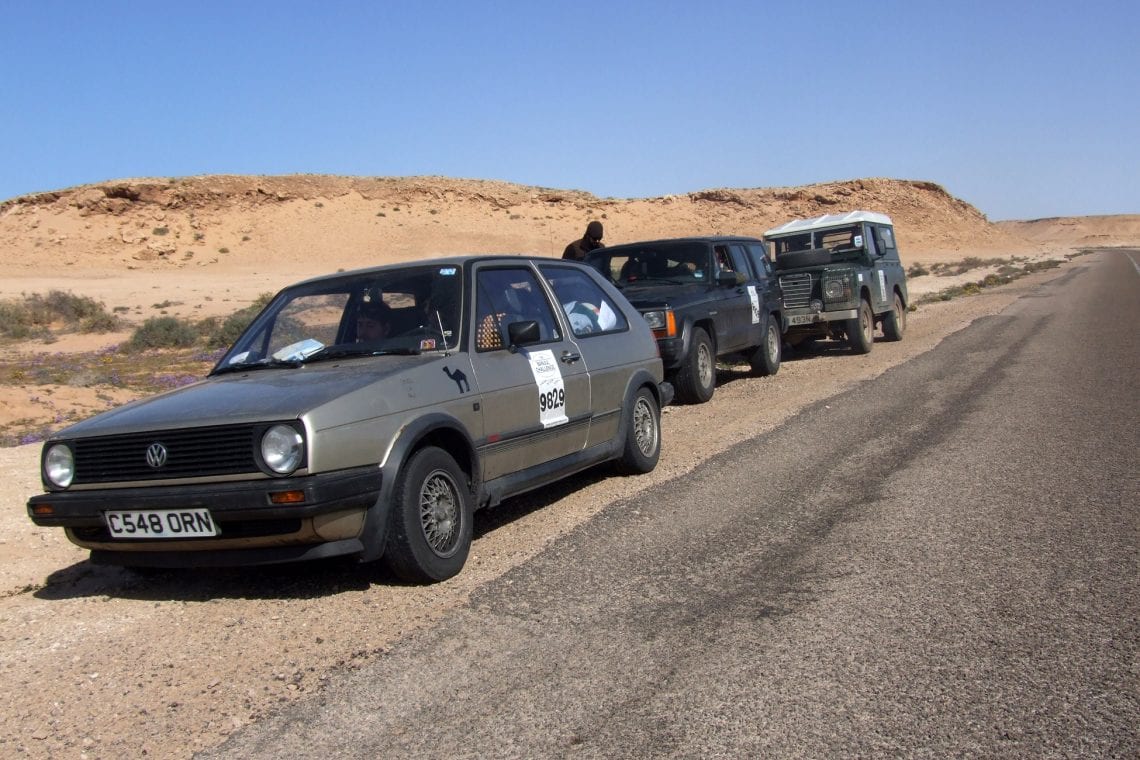
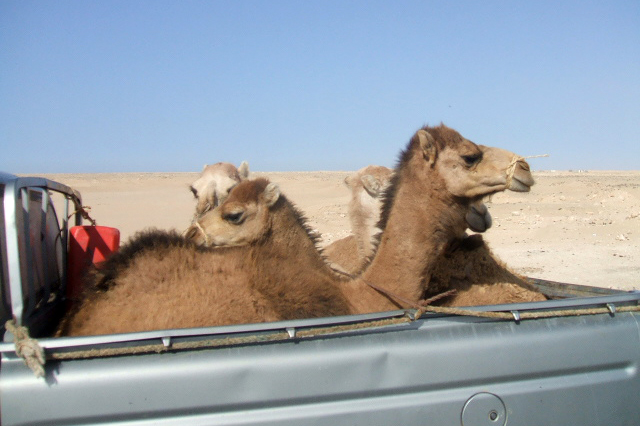
Above: Heading south on a good road
There is a popular camping site just outside the city of Laayoune, approx. 2km from the beaten track. Most teams spend the night here, have a couple of hour’s kip, and head back onto the road for another day’s driving. The site is run by a Belgian couple and you’ll be relieved to know they sell alcohol and serve some fantastic food. Surprisingly, there are showers on offer, but they operate on sea water so they don’t leave the best taste in your mouth! The camp site also offers possibly the best night sky you will ever see. With no light pollution around, the stars and moon illuminate the sky to the extent you will be able to read a book without the aid of a torch. Truly spectacular. Once rejuvenated, the next stop will be Dakhla. No other towns/ villages exist en route so preparing for a long, repetitive drive is not everyone’s idea of fun and that is true to say. Once you have seen the first hour of the terrain, you’ve seen it for the next 8 hours. Just crank up the Bob Marley, pull down the windows, and enjoy the fact you’re conquering the world largest warm climate desert.
Once you’ve reach the beginning of the Dakhla peninsular, you’ll get a sense of a different planet. A mix of sand, rocky outcrops and dunes truly give a sense of an alien atmosphere. A hot, dry but pleasant town, Dakhla is the last stop before the real desert begins and offers an opportunity to catch up with the other cars on the rally. Should you require it, it’s also the last stop to stock up on essentials, including water, food, fuel and the availability of mechanics to tweak and raise your suspension is there. Dakhla is also a great place to take in a rest day, maybe jump into the sea and explore the town a little. As the sun sets in the evening there really is no other place to be than the roof of the Sahara Regent Hotel, sipping a beer on the roof top as the sun sets over the town. On a more important topic, this is also the place to arrange a guide to take you through Mauritania. Strictly speaking, they are more practical on the off-roading route though Mauritania. Should you choose to drive straight to Nouakchott, you can make an educated decision to make him aware that you only need assistance in crossing the border formalities. Identifying these fixers/guides should be easy as they are the ones to approach you.
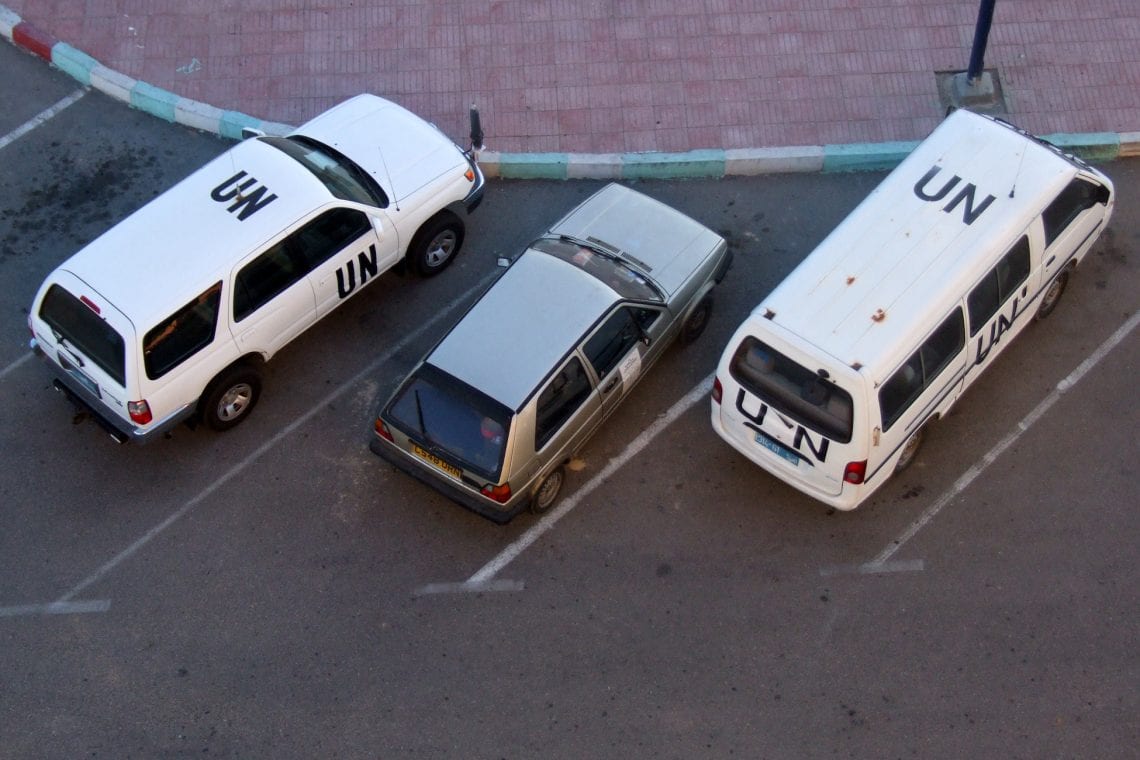
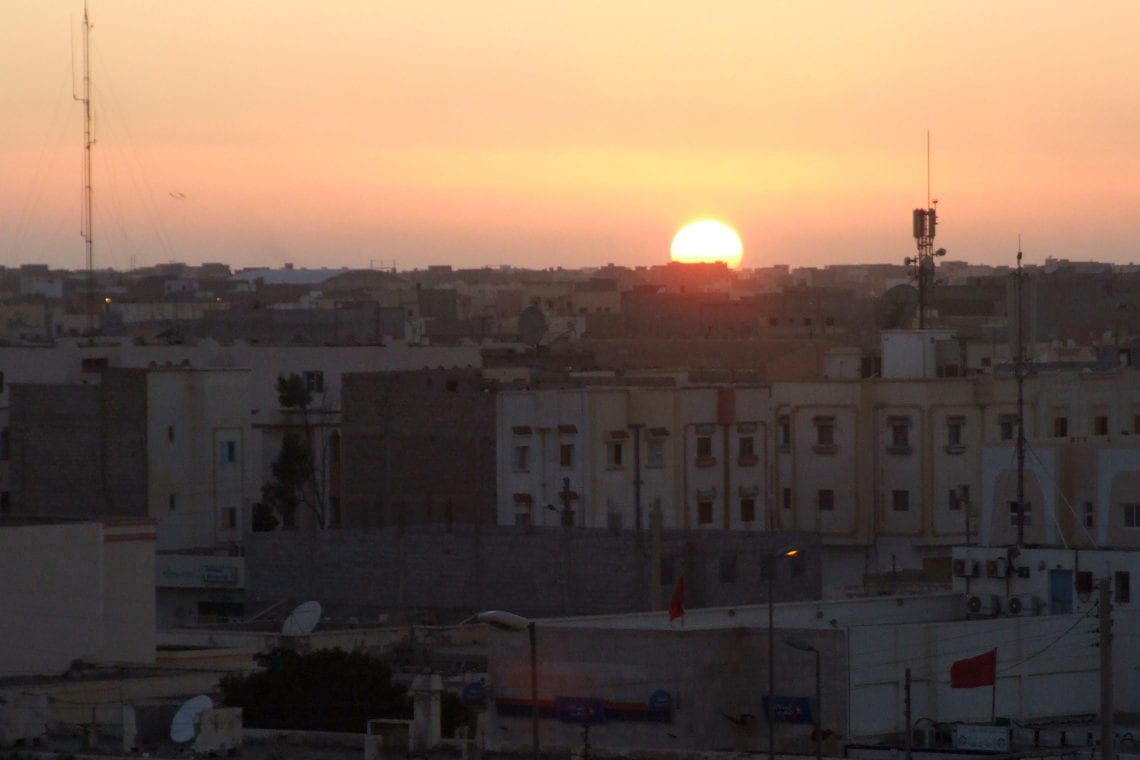
Above: Raising our suspension in Dhaka | Parking in-between UN vans | Beer on the roof watching the sunset
Leaving Dakhla, it is impossible to get lost. Just one road will now take you all the way to The Gambia. Having said that, the trickiest part of the journey is yet to come. You may think that potholes, mechanical failures, and AQIM are enough of a deterrence, but even before you get to this point, there’s the little matter of crossing the world’s most densely mined area. When a war broke out two decades ago between the Moroccans and the local Polisario, no-one would have guessed that these land mines would still be lying there, amongst the desert’s busiest Trans-Saharan route. This ‘No Man’s Land’ provides a buffer zone of approximately 2 kilometres between Western Sahara and Mauritania where the road disappears you’re treated to a dusty junction of trials – if you’re thinking optimistically. For safety reasons, the border closes at 6pm so it’s advised not to start crossing unless you’re 100% sure of where you’re going. Local tradesmen have taken advantage of this situation and despite being in the middle of nowhere, a ‘hotel’, café and a shop have sprung up. Should you wait till morning to cross, just park up (in a queue) right by the border and take the evening to relax. The border doesn’t open until at least 9am, depending on the supply of sunlight, and the Moroccan controls do not take long. As you crawl forward onto the track, you’ll see cars, and trucks which have strayed too far from the ‘designated’ route and fallen victims to both anti- vehicle and anti-personal mines just metres around you. Truly a surreal driving experience, it’s best to follow the vehicle in front of you and the general consensus of a safe passing is to keep left. Convoys of vehicles are common and if you’ve hired a guide then he’ll know how to get you through this 2km stretch. It’s not uncommon to experience ‘a backlog of cars’. Driving slowly really is the only way to cross this landscape as the uneven surface scrapes the underneath of your vehicle. Despite the state of the track, you’ll be shocked to see all types of vehicle using it. You may even be confronted by an 18 wheeler heading in your direction!
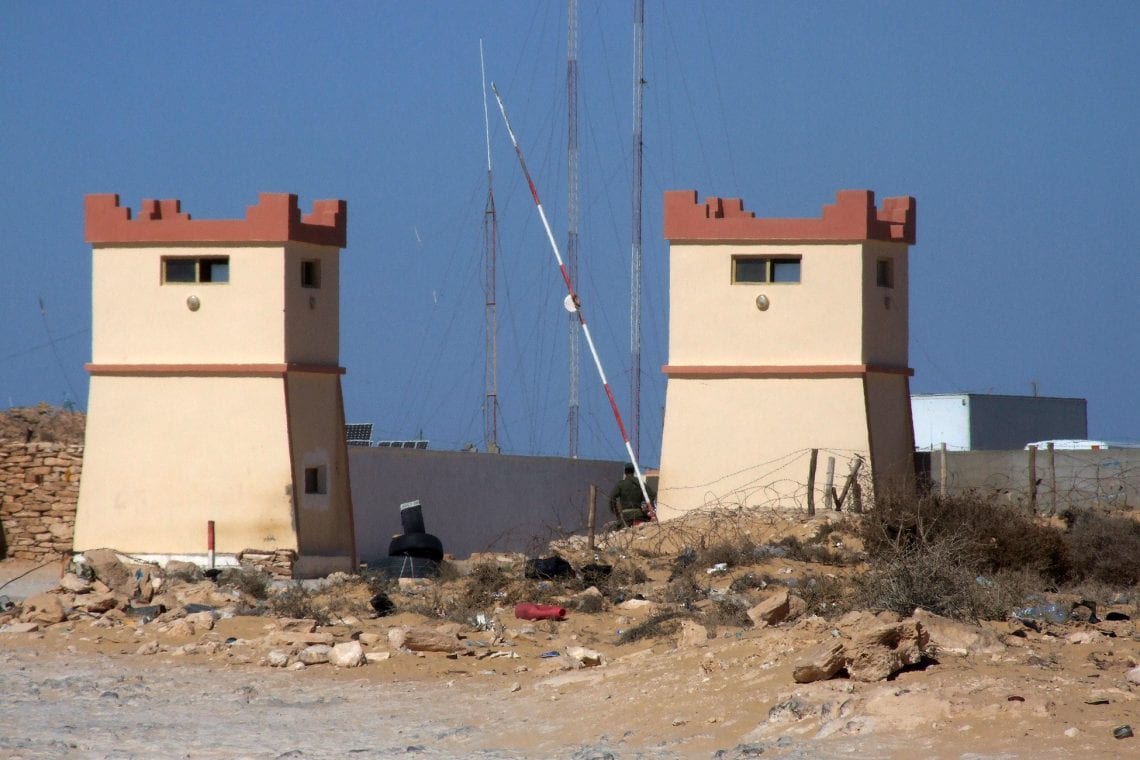
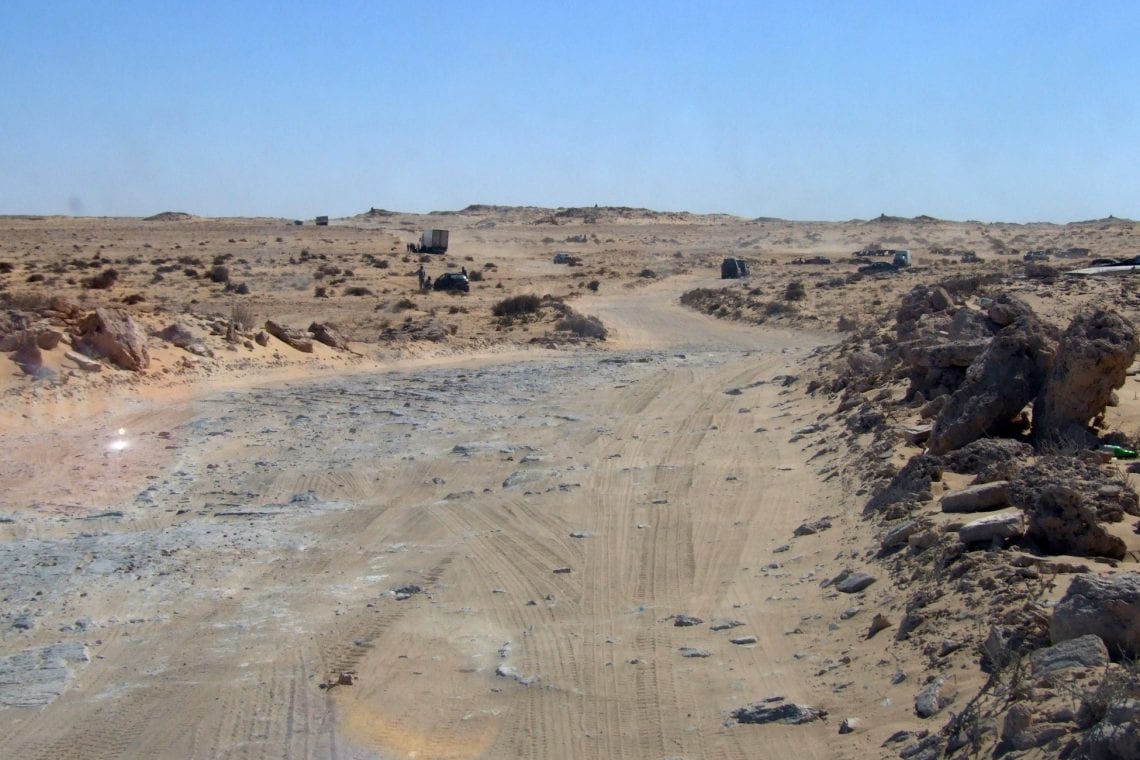
Above: Approaching the boarder between Western Sahara (Morocco) and Mauritania | Driving thought no-mans land over a mine field
Arriving at the sleepy Mauritanian border post, you instantly see the difference in efficiency between the neighbours. Questions, vehicle searchers, and requests for brides is what you can expect here, though it’s not called a bride… it’s a gift! Yes, here it’s ‘traditional’ to pass gifts to officials, whether it’s cash or a bottle of water, it’s likely to speed up how quickly you pass through. In case you haven’t already guessed from the official name, The Islamic Republic of Mauritania is a highly religious country and the importation of alcohol is illegal. If found it will be confiscated. Over the years, people have come up with creative ways of smuggling booze through. From fake fuel tanks to secret compartments sowed within car seats. Either way, if you are trying to import some celebratory alcohol, make sure it’s done before you reach Mauritania! Guards and police will usher you into the relevant office for your passport to be stamped and relevant insurance paperwork completed, then hopefully send you on your way.
Close to the border is the city of Noaudhibou, Mauritania’s commercial hub and home to one of the world’s largest ship grave yards. Driving in this town is stressful and the rules of the road appear like nothing you’ve witnessed so far, but these days, due to security concerns the peninsular is often bypassed in favour of driving directly to the capital, Nouakchott. Driving past Mauritania’s second largest city, the route divides; the more direct route (by road) continues for four hours until you reach Nouakchott, alternatively, a three off-road experience (best taken only with a guide) exists. In our case we opted to off-road and experience the empty desert of Mauritania. Three days will take you across wild desert with nothing in sight apart from sand. Wild camping in the Sahara is one of those moments that stay with you for the rest of your life. Your guide should suggest the best place to set up camp, and help build a fire for the cold evening and nights.
As the glow of the fire reflects of your cars and the wind blows through your hair, it’s worth once again soaking up the night sky -you’ll be amazed what is to be seen; constellations, meteorites, and satellites all occupy the sky in a truly remarkable panoramic view of the heavens in such a way that you simply cannot witness in populated areas. As you zip yourself up in sleeping bags and gradually fall asleep you can’t help but think how exposed you are. After the tent lining, there is a world of nothing; miles of sand, rocks, and possibly the odd camel. The novelty of this fails to leave you, as the next day you could be driving along the coast of the country’s deserted beaches, occasionally passing a small makeshift fishing hut. This route is passable to the majority of vehicles so don’t be afraid if you’re in a two wheel drive, just be prepared for a lot of digging and energy burning.
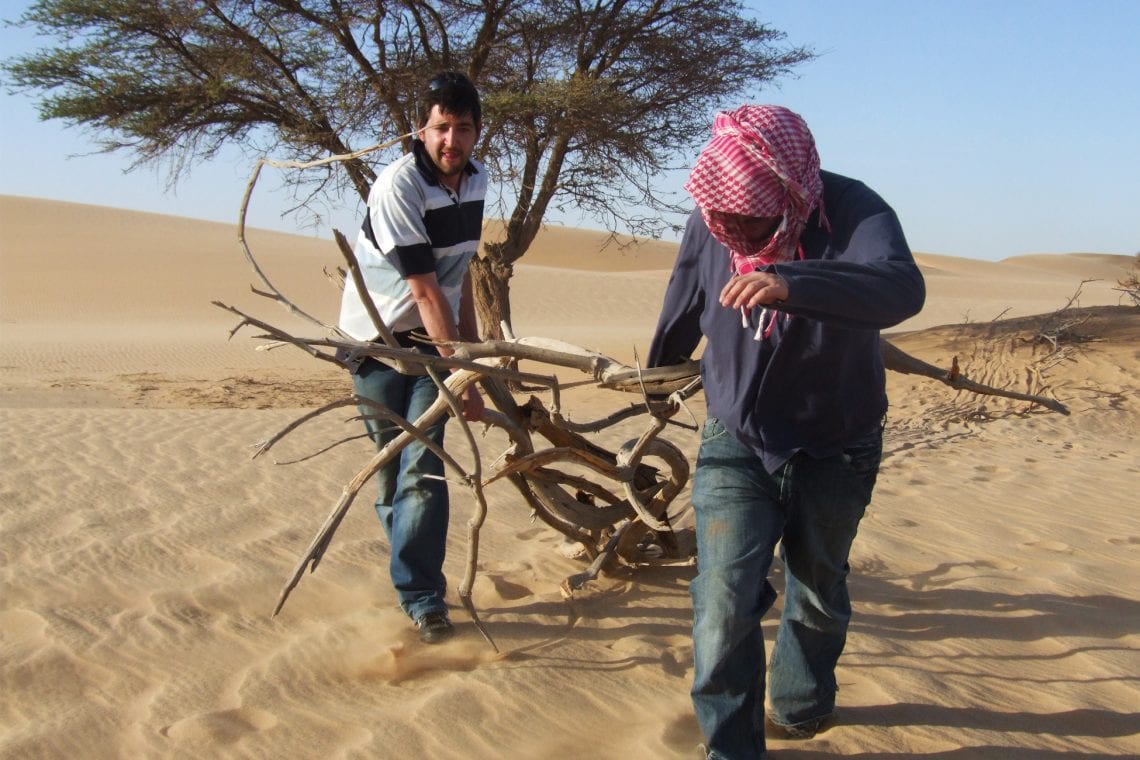
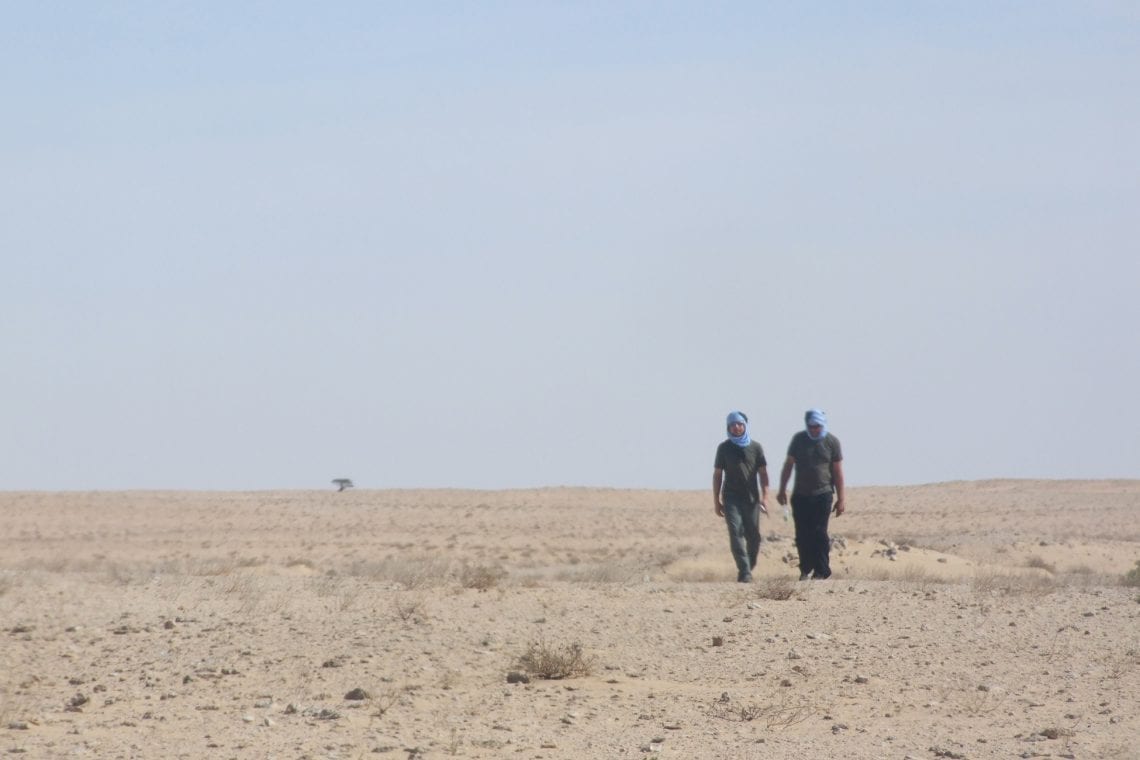
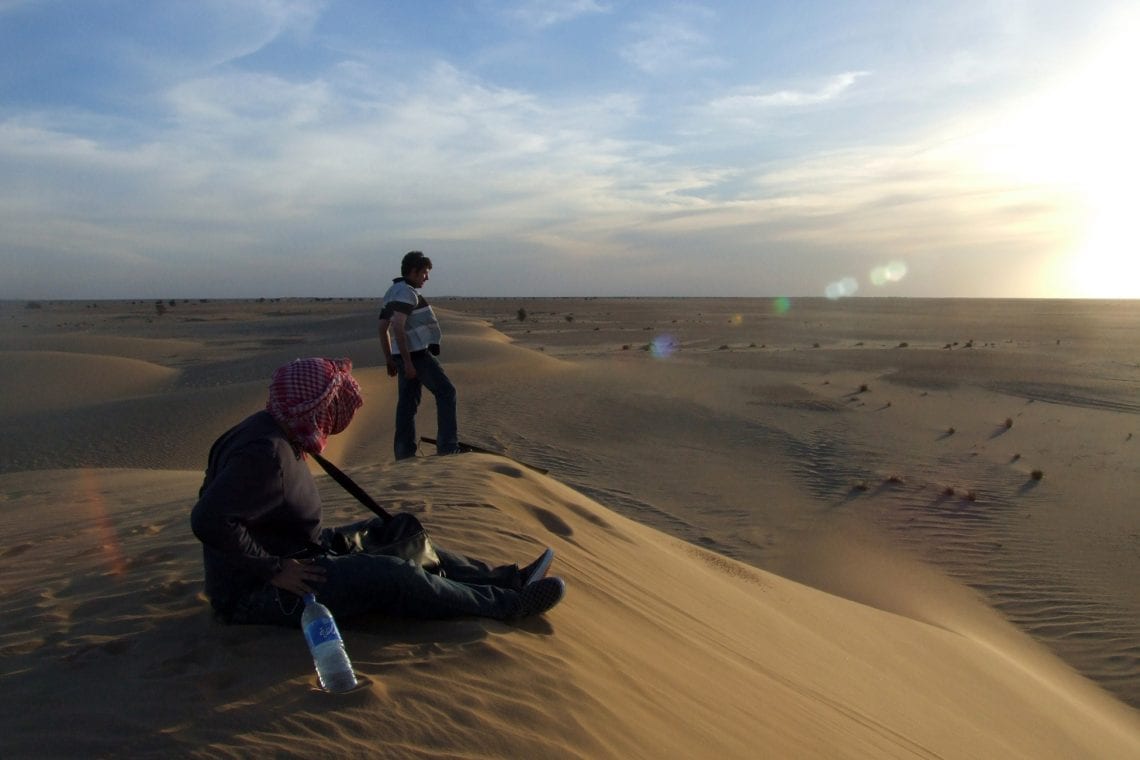
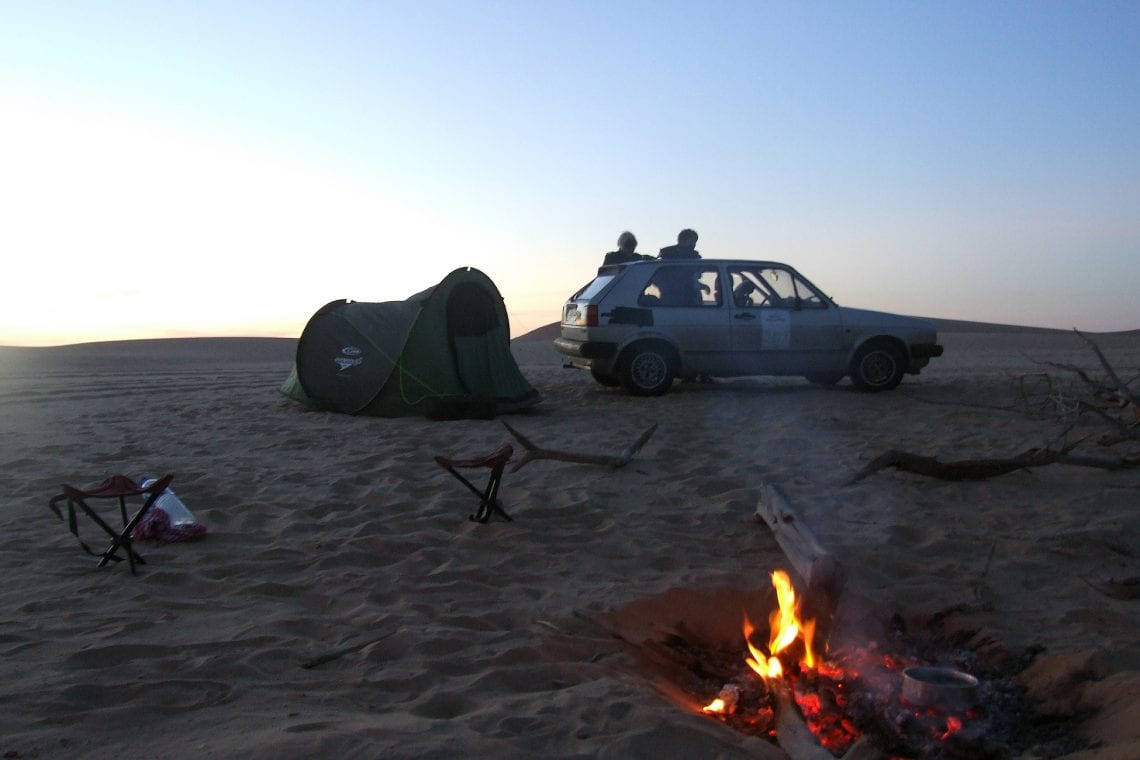
Above: Camping in the Sahara with other teams
Unfortunately as the security situation deteriorates it is becoming the norm to miss out on the off-roading experience and wild camping and opt for the relatively new road which connects the northern border with the capital, four hours later. Nouakchott has little in the way of tourist attractions but if you’re a keen adventurer you’ll find the city fascinating in itself. Here you will find an almost 100% absence of paved roads, no pavements, and certainly no commend of the rules of driving. The infrastructure has suffered a recent decade of neglect as the city has swarm from 40,000 inhabitants to almost a million. One site that is worth a look is the Nouakchott fish market, said to be the largest in Western Africa. The daily catch comes in at 4pm and you can see the fresh stock being brought from the fishing canoes to the shores in the nets amongst the ‘hussle and bussle’. Taking pictures can be a bit of a touchy subject and you might find yourself being shouted at and drawing unwanted attention. Be subtle, or, if desperate, ask before you snap! Take the guidebooks advice and don’t hang around for too long to avoid crowds of people gathering. The perfect place to retire to is the ‘Auberge Sahara’. This translates into ‘The Sahara Inn, but from first sight, looks like more of a compound. Surprisingly you’ll be amazed to realise there is free access to wifi, and a sufficient supply to fresh water. The Inn is filled with Westerners and the owners speak fluent English so communication is not a problem. Believe it or not there is also access to a washing machine should you need it.
As you leave Nouakchott behind, the landscape begins to turn again, the baron pastures become scattered with grass, first yellow than green, bushes start to appear and vegetation begins to grow around you. The ‘road’ also becomes unrecognisable with crater like potholes. Progress does slow down significantly but there is no better route or worse for that case available.
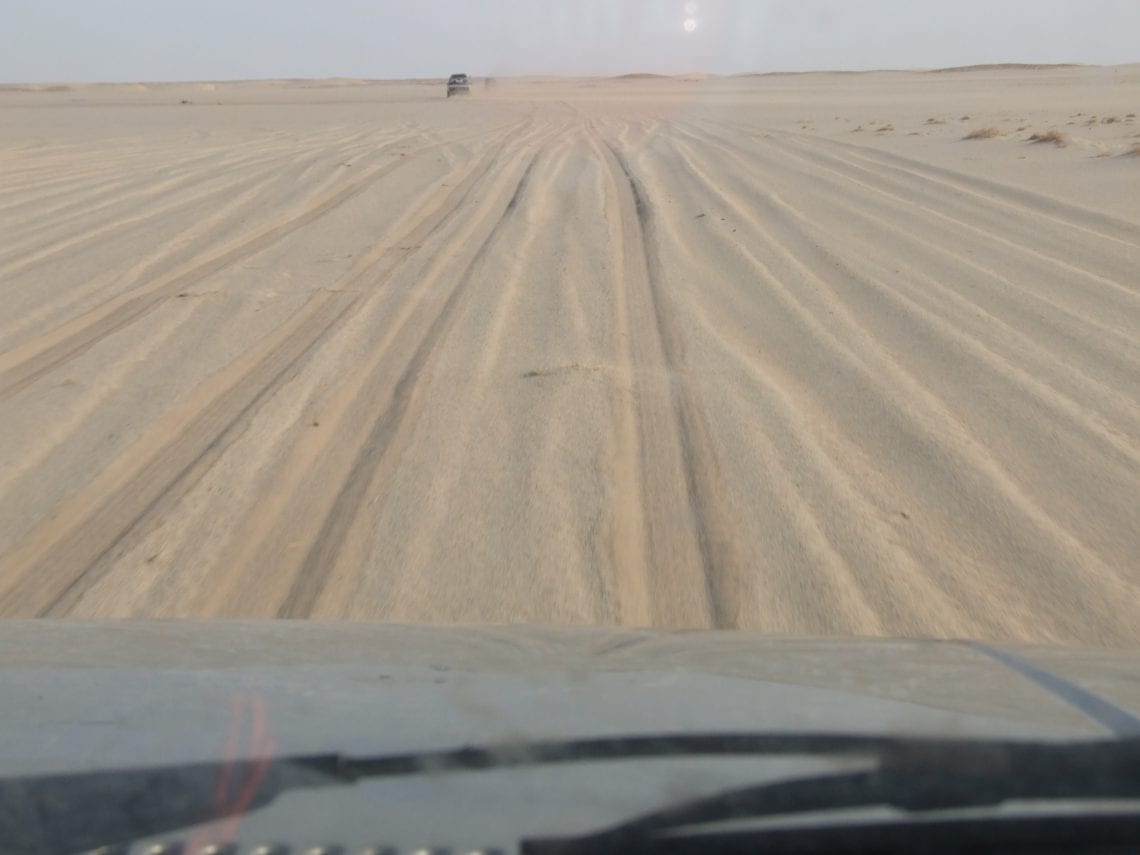
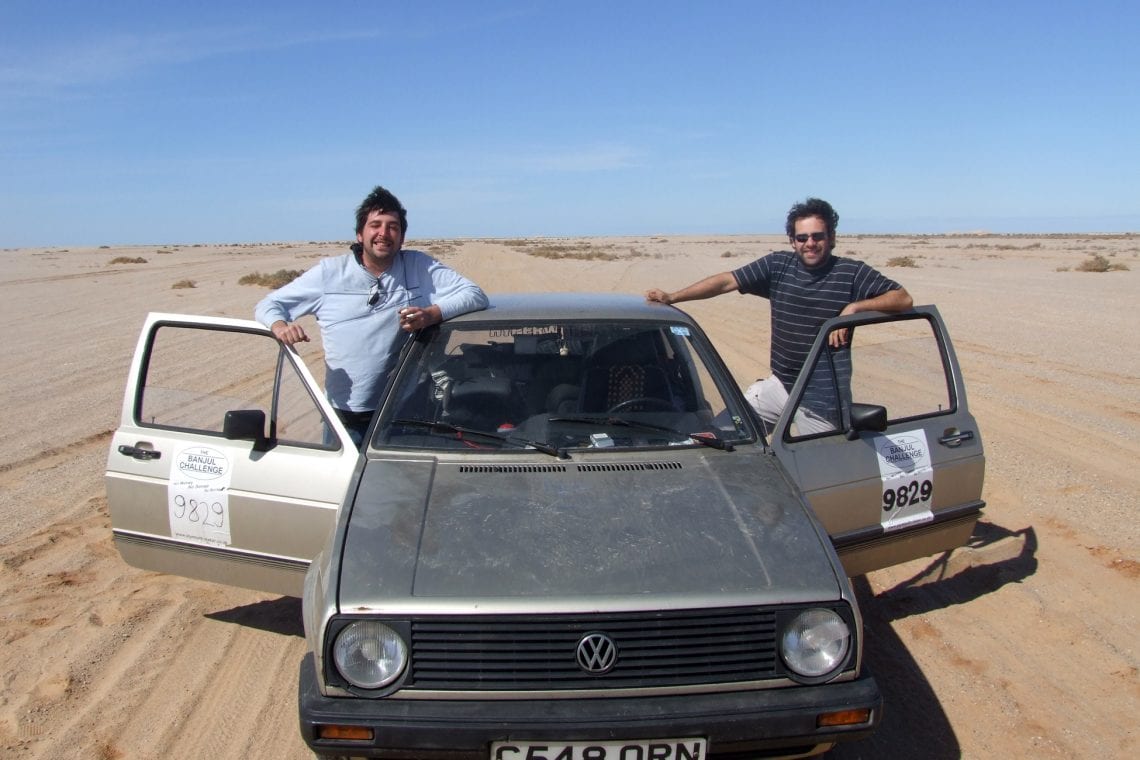
Above: Driving along the coastline | The sand can be rather soft in places | Lee and Maz
By the time you get to the Senegalese border, the decision of which border crossing to take must be made. Two options exist; through the town of ‘Rosso’, where a ferry will take you across, or through the border post of ‘Diama’, over a bridge. Nowadays, there is a general consensus that the Diama crossing is more efficient and more pleasant in passing. The crossing at Rosso is now being neglected as more and more people have expressed stories of major corruption, bribery and threats. In a nutshell, the crossing has actually become pretty dangerous to any foreigner so should only be considered as a last resort. In contrast, the small isolated border control of Diama is the preferred choice, the only downfall, it being a 30 kilometre detour along what can only be described as a horrendous piste and a series of ‘tolls’ along the way. Amongst the expeditions, there is a national park transit fee of 10 Euros, and a further 10 Euro fee for the crossing of the bridge. All in all, it’s a small price to pay for the luxury of avoiding Rosso but of course you’ll still have to pay your way through, into Senegal. Official ‘no car older than 5 years of age is permitted to enter Senegal without a Carne de Passage’, but this seems to me a rule of convince exercised by the boarder officials. Depending on your negotiations skills, you may pay a hefty fee to enter and be let loose in Senegal or you may be escorted thought the country with an official. Every person who passes though this frontier has had different experiences, but one thing is for shore, it wont be as straight forwards as it should and you’ll most likely be lining someone’s pockets.
After such a day, anyone and everyone is entitled to a well-earned rest, and conveniently positioned a few kilometres from the border is where you will find the aforementioned beach resort of Zebra Bar. A fantastic campsite with even better hospitality and as close to a utopia you’ll find these days. The resort is run by a Belgium couple and offers you the chance to completely unwind without any stress. Beers are on ice, hammocks are ready and the piece and quite from the outside world and corrupt officials is a god send. Let your guard down and reflect on your experience so far for a few well earned ‘holiday’ moments. When it’s time to retreat to your sleeping set up, the resort has a lot to offer. If you are on a budget, pop up a tent for a few euros; alternatively spend the few euros more for a bungalow, with en suite and finish in style.
In the morning you can organise for breakfast to be made for you on the ocean front and once over your hosts can organise a boat trip to the former Senegalese capital of Saint Louis, an ex-colonial town position on an island connected to the main land via a long bridge. Many of the former French buildings still stand albeit in a dilapidated way, but the town gives you a chance to stretch your legs and walk around the quiet central part of town – a stark contrast to the chaos of many African cities.
When that time comes, you can breathe a sigh of relief. Despite your adventure is anything but over, from now on, your on Gambia’s doorstep and if it really comes to it, we’re sure you’ll be happy to push. On the more practical front, you’re in civilisation so help is only a whistle stop away. While there are a handful of interesting sights in Senegal such as Dakar itself or the pink salt lakes, the hard work you’ve put in with the authorities doesn’t make visitors want to stick around. A drive straight from ZebraBar to the Gambia is on the cards, but what isn’t, is once again, the state of roads you will encounter. Pot holes are big enough for you to lose a wheel.You make luck out and actually drive on uninterrupted tarmac for a few kilometres, but don’t get your hopes up. Soon you’ll be back in a sea of potholes and this only gets worse as you approach the Gambian red sandy piste, in parts washed away and ruined by large cargo lorries who’ve spun groves in the path. Where possible, it’s sensible to just drive on the side of the actual track, rather than on it. Road signs are non-existent so you’ll have to ask around for directions if you get stuck and eventually you should, by hook or crook, arrive at to border (Senegal/Gambia).
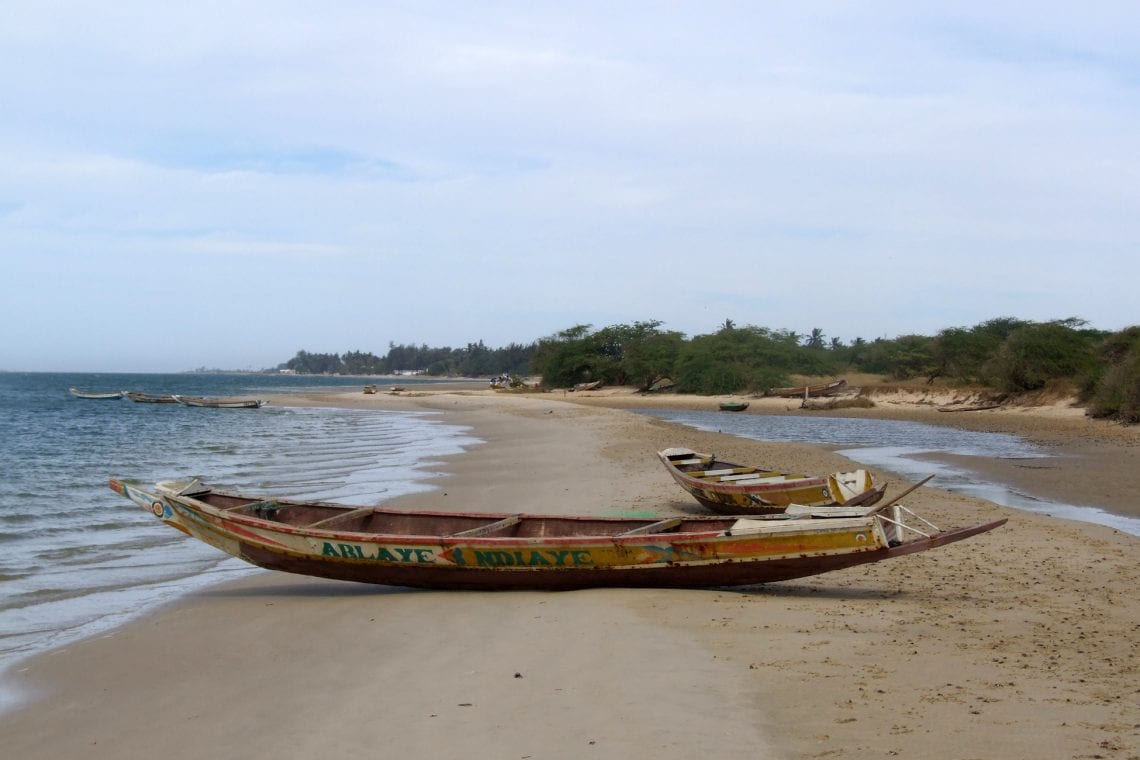
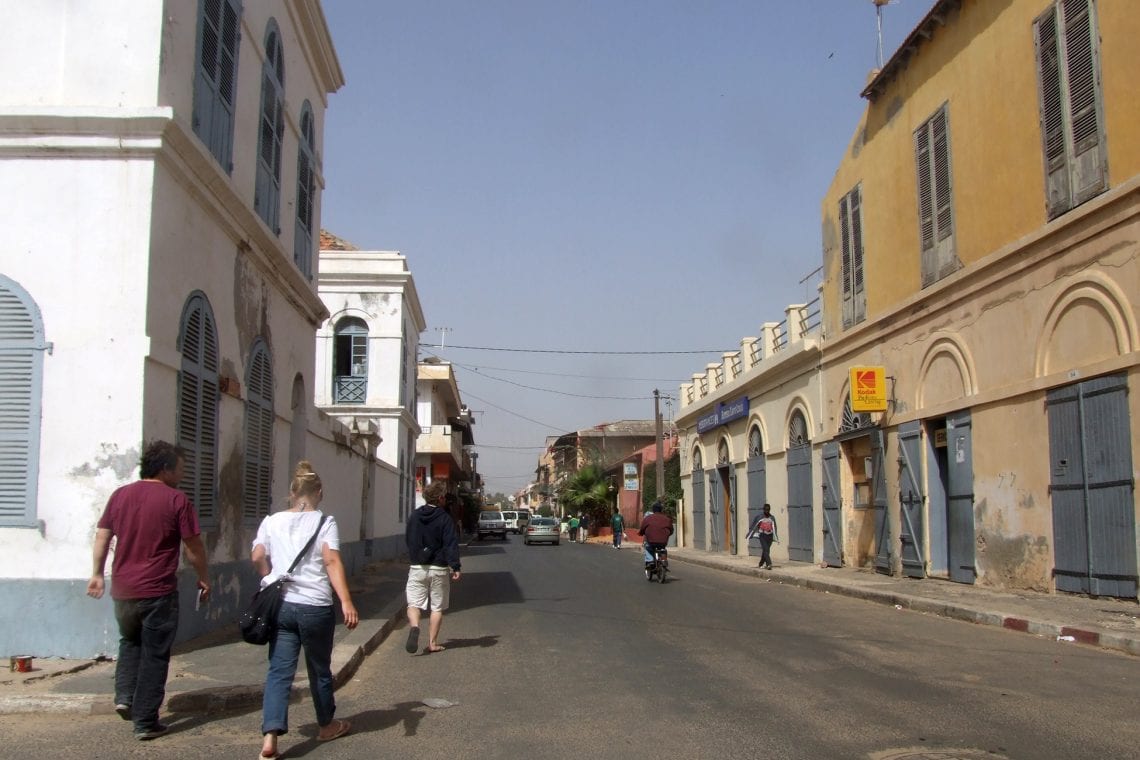
Above: Relaxing at the beach in Senegal before jumping on board the wooden boat and visiting St Loius
This, your final frontier crossing will yet provide another opportunity for official to insist on payment of fictional fees or try buying your car and demanding payment of a “road tax” the latter rather amusing considering the state of the courtiers roads. Stand your ground, you’re a few meters from the Gambia were you’ll receive the warm and friendly welcome.Insist everything has been paid and do not let your passport out of your sight. If you’ve been unlucky enough to have been escorted this far be advised that official who has travelled with you is sure to do a disappearing act so expect no help in the border formalities. The border has a very busy atmosphere with people offering their goods for sale… as well as their services.
Once past Senegalese customs, everything should be smooth sailing through the police checks and Gambian officials. Arriving on the Gambian side of things you rapidly notice a difference in mentally. Authorities great you with a smile and hand shake and you will see how the Gambia lives up to its reputation of ‘The Smiling Coast’. This rally and others like it bring a lot of money into the country and Gambians understand the importance of tourism, even unconventional tourism like ours. Border process is complete in a matter of minutes, and you’re free to drive into the Gambia! Job done? Not quite. The Gambia is one of the smallest countries in Africa, but it’s divided by the mighty river the country is named after. Small river ferries bridge this from the Northern Bank town of Barra to the nation’s capital, Banjul, taking approximately 40 minutes. Tickets need to be bought beforehand at the many booths on the road leading up to the port.
Arriving on the final stretch, there’s no real finishing line. Entrants on the rally are given a drop of point for the vehicles where an rally official take your keys and you sign your paperwork to pass on ownership to them. These cars will then be auctioned off and proceeds will go to selected charities. There’s no immediate rush however; spend some time before your flight home saying goodbye to the hunk of junk that got you so far and explore the wonderful country.
You need not sign up to a rally to do this trip, in fact many adventurous soles travel this route independently, but what a the Plymouth Banjul rally gives you, is that it groups you with likeminded people with whom you can share this experience. You’ll make friends, share stories and help push each other’s cars out of sand. Plans for next year’s run will be made and overall, you’ll enjoy the company of someone else other than your ‘co-pilots’. Importantly, the rally gives you a legal way of disposing your car. As the ultimate goal is to donate the car to charity, you avoid complications of import tax, etc and can rest easy, knowing you have done your bit in raising some money for worthy causes.
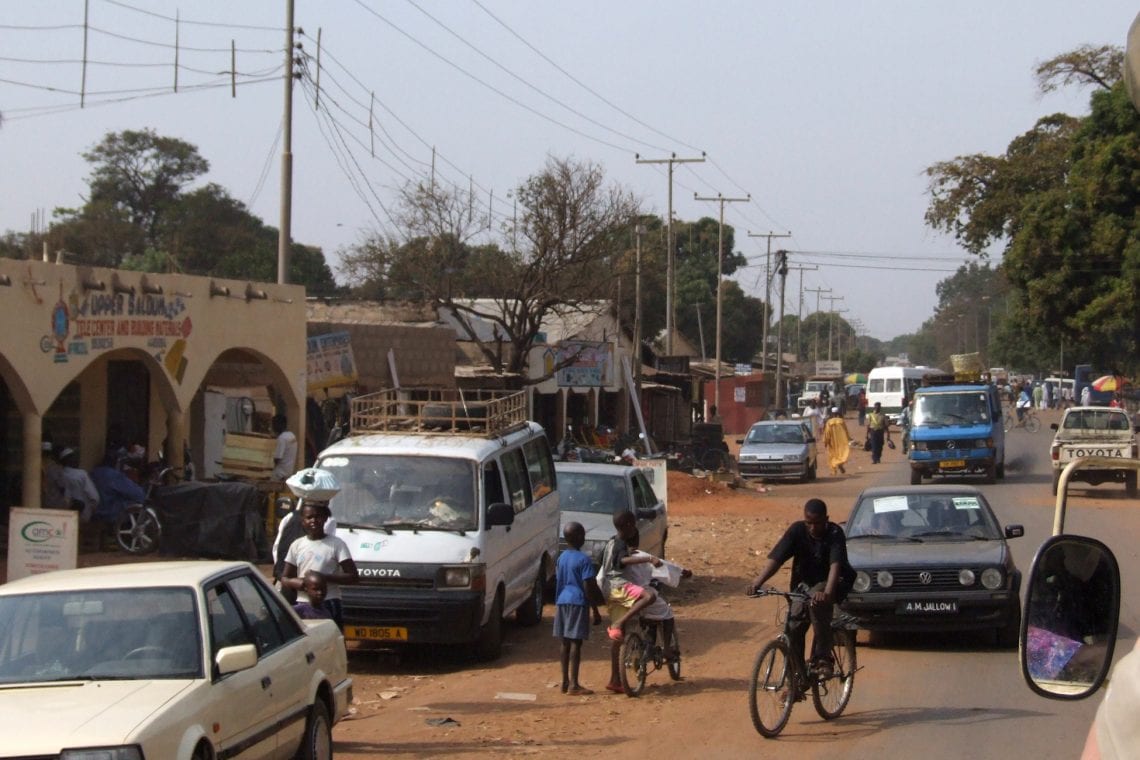
Above: Trying to figure out the rules of the road once we arrive in The Gambia
USEFUL INFO & BUREAUCRACY CHECK LIST
- The official website of the event: www.dakarchallenge.co.uk
- Rally Fee (£300) | Passports & Driving License | International Driving Permit | V5- or other official looking car ownership papers | Yellow Fever Booklet
- V14 – as soon as your car leaves the UK you are eligible for a road tax refund. Simply attached the tax disc to the form and send it off from Dover or Calais
- VISAs – the current situation is that you must secure your Mauritian Visa before arrival at the border, this can be done on route in Rabat, Morocco
- FICHE – Throughout Morocco, Western Sahara and Mauritania you will be stopped by multiple checkpoints who aim to record your details. A Fiche is a sheet of paper with each person’s details. A great time saver, rather than filling out their forms just pass them your pre completed Fiche. Bring about 100 copies
- Specific Car insurance – obtainable in each country or at borders





